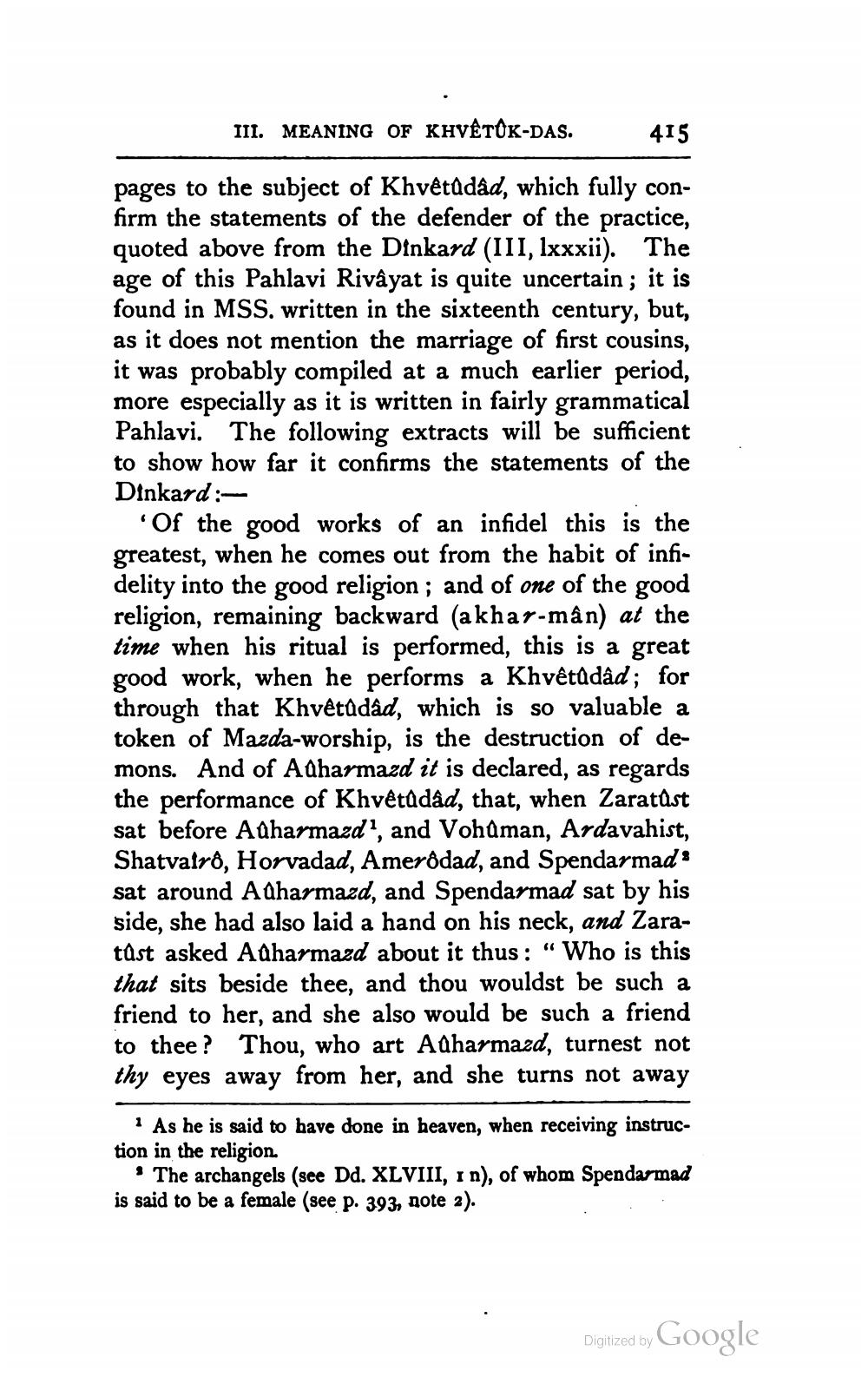________________
III. MEANING OF KHVỆTOK-DAS.
415
pages to the subject of Khvêtudâd, which fully confirm the statements of the defender of the practice, quoted above from the Dinkard (III, lxxxii). The age of this Pahlavi Rivậyat is quite uncertain ; it is found in MSS. written in the sixteenth century, but, as it does not mention the marriage of first cousins, it was probably compiled at a much earlier period, more especially as it is written in fairly grammatical Pahlavi. The following extracts will be sufficient to show how far it confirms the statements of the Dinkard :
Of the good works of an infidel this is the greatest, when he comes out from the habit of infidelity into the good religion ; and of one of the good religion, remaining backward (akhar-mân) at the time when his ritual is performed, this is a great good work, when he performs a Khvêtādâd; for through that Khvêtādâd, which is so valuable a token of Mazda-worship, is the destruction of demons. And of Adharmazd it is declared, as regards the performance of Khvêtadâd, that, when Zaratūst sat before Adharmazd, and Vohuman, Ardavahist, Shatvairo, Horvadad, Amerôdad, and Spendarmads sat around Adharmazd, and Spendarmad sat by his side, she had also laid a hand on his neck, and Zaratast asked Adharmazd about it thus: “Who is this that sits beside thee, and thou wouldst be such a friend to her, and she also would be such a friend to thee? Thou, who art Adharmazd, turnest not thy eyes away from her, and she turns not away
As he is said to have done in heaven, when receiving instruction in the religion
• The archangels (see Dd. XLVIII, 1 n), of whom Spendarmad is said to be a female (see p. 393, note 2).
Digitized by Google




